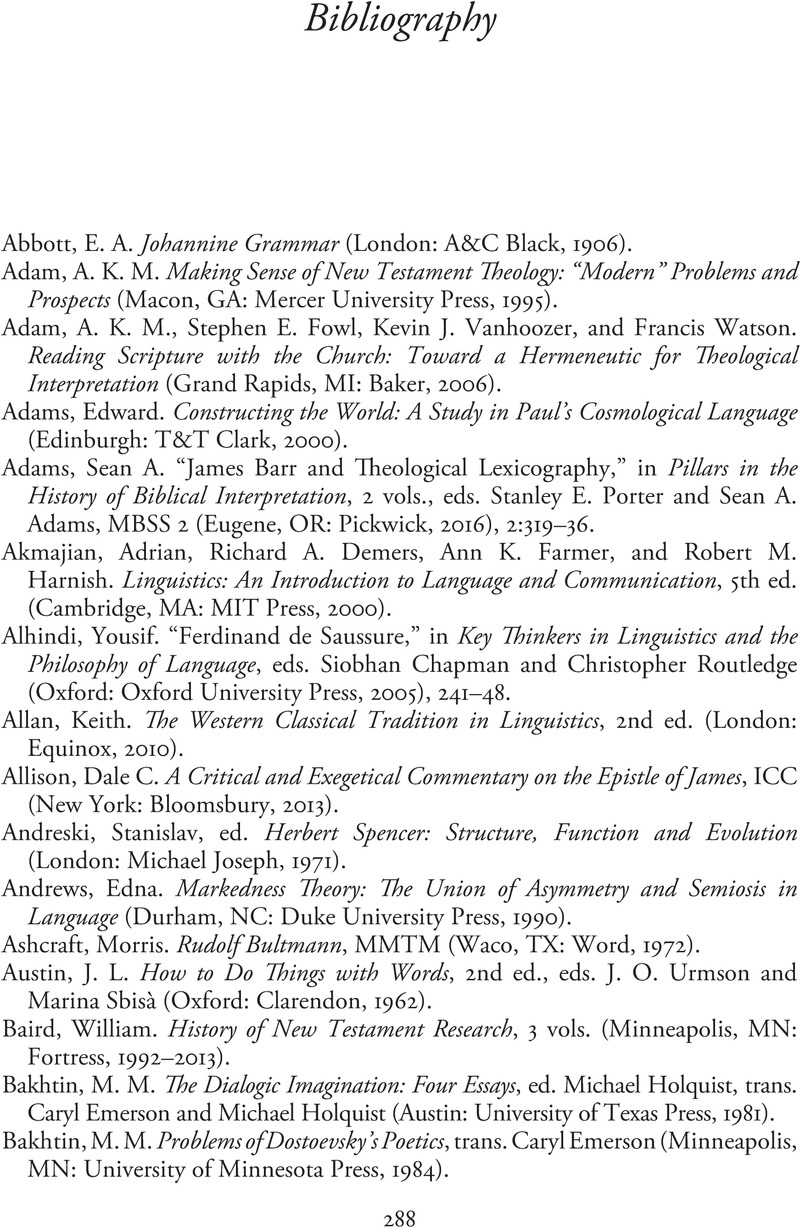Book contents
- New Testament Theology and the Greek Language
- New Testament Theology and the Greek Language
- Copyright page
- Contents
- Preface
- Abbreviations
- New Testament Theology and Greek Linguistics
- Part I The Origins of New Testament Theology and Greek Linguistics
- Part II The Present State of New Testament Theology and Greek Linguistics
- Part III The Possible Futures of New Testament Theology
- Bibliography
- Modern Author Index
- Ancient Source Index
- References
Bibliography
Published online by Cambridge University Press: 13 October 2022
- New Testament Theology and the Greek Language
- New Testament Theology and the Greek Language
- Copyright page
- Contents
- Preface
- Abbreviations
- New Testament Theology and Greek Linguistics
- Part I The Origins of New Testament Theology and Greek Linguistics
- Part II The Present State of New Testament Theology and Greek Linguistics
- Part III The Possible Futures of New Testament Theology
- Bibliography
- Modern Author Index
- Ancient Source Index
- References
Summary

- Type
- Chapter
- Information
- New Testament Theology and the Greek LanguageA Linguistic Reconceptualization, pp. 288 - 334Publisher: Cambridge University PressPrint publication year: 2022

